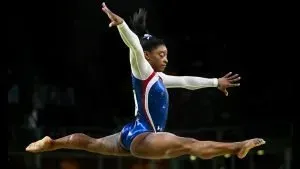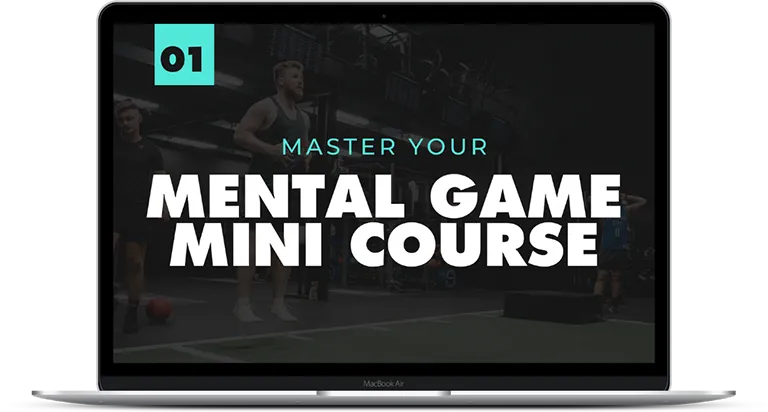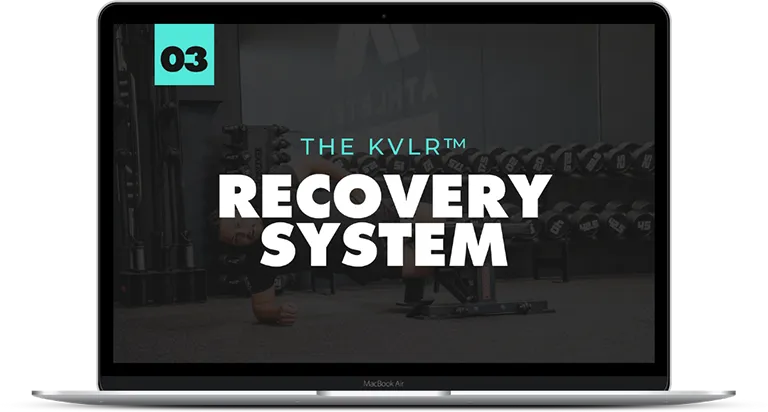Athletes Authority
Latest Blog & Insights

How Athletes Can Beat Pre-Competition Anxiety By Mastering This Simple Technique
Once You Master This Technique, You’ll Always Be Able To Keep Your Head In The Game… Even When The Pressure Of Competition Piles Up On You…
The greatest weapon against stress is the ability to choose one thought over another
WILLIAM JAMES
If you wanted to improve your sprint speed, what would you do?
Hopefully, you’d commit to an effective strength program that priorities both horizontal and vertical force production through the ground and then, learn how to optimize your acceleration and max velocity mechanics to put that extra force production to use.
If you were to follow a strategy like this, you’d put yourself in really good stead to come out the other end with improved technique, increased force production, and ultimately, a faster flying 40m sprint.
So why is the idea of putting a strategy in place for weak links in your mental game, and then executing on the solution, so taboo?
How Athletes Can Beat Pre-Competition Anxiety By Mastering This Simple Technique

How Athletes Can Beat Pre-Competition Anxiety By Mastering This Simple Technique
When I was a young pitcher in the national league here in Australia, I got my first taste of real, crippling, competition anxiety.
I was going to be the lead out pitcher against a high-flying Japanese team that had flown in and I was opening the game at the top of the first.
But I was used to that; I was always lead out and I was used to that expectation, but this time was different.
Unlike the Australian junior rules, junior Japanese baseballers used a ‘Kenko’ ball, a rubber, seamless alternative that was considered ‘safer’ than a traditional, stitched baseball.
It was slightly smaller to accomodate smaller hands, and slightly lighter, too.
Because the ‘minority rules’, we had to play with the Kenko ball, and as I warmed up in the pens, I couldn’t get into a rhythm.
It felt different. After throwing tens of thousands of balls with a standard baseball, this rubber alternative was different enough that it literally, threw me off guard.
The feelings of pressure started to rise...
With all eyes were on me and the Japanese First-base coach chanting furiously in Japanese, I was succumbing to the deafening distraction. The whole dugout out was shouting incessantly in a language I was unfamiliar with and it was getting under my skin.
Unsurprisingly, I walked the first batter.
I only threw one strike in my first five balls.
Then I walked the second, all four balls dropped into the plate early down at his shins.
Adjusting, I sat the next up, just a little higher than I normally would. It got annihilated by their third batter, whistling over the center-outfielder’s head for an early 3-0 lead.
Not a great start...
With my head rattled, I had absolutely no strategy whatsoever to get out of this.
My coach, a wise old-timer who had been by my side since I was 8 years old, called a timeout and walked to the pitcher’s mound. He told me to go back to basics; that I had everything I needed to succeed, and that I needed to shut out the noise.
But as a young 14-year old, I simply couldn’t shut out the noise. I had no viable strategy to deal with the pressure, and I walked two more batters before being pulled off.
I hadn’t even closed the first innings.
I was embarrassed and humiliated.
For the next two years, that experience was etched into my brain. It stayed with me every time I walked to the mound, every time I went to rep training, and every time I trialed for the state team.
Without an alternative strategy, and with no one ever addressing it, that bad experience would be my downfall; as a promising young pitcher, I would give up only two years later and I’d walk away from my dream of being a baseballer who’d travel to the US.
From my discussions with hundreds of athletes, countless coaches, and many sporting parents, my experience isn’t unique…
An athlete’s mental state is a ‘don’t touch, don’t agitate, and don’t address’ off-limits zone that could open a big can of worms and completely derail the athlete; unless of course, you can afford a good sports psychologist.
The assumption that an athlete’s mental state is ‘better left alone’ and can, and should, be addressed by ‘training harder’ is one of the biggest fallacies out there. In reality, simple and wildly effective strategies exist for priming the mental state before competition to reduce nerves and anxiety and, create a sense of calm confidence.
In fact, the pre-competition anxiety an athlete experiences is no different from what musicians, stage performers, or public speakers experience, and apparently, it’s not taboo amongst those circles. Nerves are considered part of a big performance that you have to overcome, and having a strategy for them is as normal as practicing your lines.
So what can athletes learn from other forms of performance, and how can what can you do to help get yourself in a state of calm, confident flow in the hours and minutes leading into big events?
How Athletes Can Beat Pre-Competition Anxiety By Mastering This Simple Technique
The Diaphragmatic Breathing Triangle — The Breathing Strategy That Regulates Arousal and Controls Your Heart Rate
How Athletes Can Beat Pre-Competition Anxiety By Mastering This Simple Technique

The 15-Second Triangle Breath Is Used Worldwide To Help Regulate Arousal and Reduce Competition Anxiety
How Athletes Can Beat Pre-Competition Anxiety By Mastering This Simple Technique
If you’ve ever been overcome with nerves before, you’ll know that one of the most crippling parts of it is the rapid increase in heart rate. It makes talking difficult, breathing difficult and decision making difficult. For some athletes, competition pressure cripples them and an intense heart rate leaves them feeling completely out of control.
As a stage performer or public speaker, one of the most common strategies to regulate your arousal is to use a mental model of a ‘Diaphragmatic breathing triangle.’ It’s taught around the world to singers and performers as a way to regulate arousal. Type it into google and you’ll get thousands of keyword responses.
With this model, you take a deep belly breath over five seconds, slowly making your way down one side of the triangle from the top point. Your belly should rise in a 3:1 ration with your chest and ribs like you’re trying to recreate a pregnant belly. When you reach the end of the first side, hold your breath for five seconds, making your way down the bottom side of the triangle. Then, as you make your way back up the final side of the pyramid, exhale fully, getting rid of all your air, over another 5 second period.
Try it for me.
Five seconds in, making your way down, five-second hold, making your way across, and five seconds out, making your way up.
Notice what happens with your heart rate… You’ll be much more aware of it, and it will slow. You’re literally tapping into biology and your parasympathetic nervous system when you regulate your breathing.
That’s important, because research has indicated that the heart rates of professional athletes in anaerobic sports like diving, gymnastics, baseball, golf etc can differ wildly between training and competition.

Gymnast | Simone Biles | Calm Stays Under Pressure (Photo by Alex Livesey/Getty Images)
In training, a heart rate might sit at 90-100 BPM, slow enough that decision making in the pre-frontal cortex is essentially, unimpaired.
But the same activity — whether it be a swing, a pitch or a dive for example, can skyrocket a heart rate in competition to 120-140bpm.
If we take a resting heart rate of 60BPM as baseline, that’s literally, a 100% increase in beats per minute compared to what you feel in training. This increased heart rate can make it difficult to replicate what you regularly achieve in training, and explain the inconsistency of competition performances.
The research on this is concrete — the higher the competition pressure, the worse the results. In the 1990s, a study on semi-professional golfers incentivised successful puts with a cash prize. These putts were easy and prior to the cash incentive being awarded, they were putting these at an incredibly high success rate. As the putts increased in cash reward, the strike rate got lower and lower. This aligned with intrinsic performance markers like HR — the higher the cash incentive got, the higher the heart rate, too.
This research shares an important insight — we need to align competition as closely with practice as possible, and practice, as closely with competition as possible. By using the breathing triangle strategy, you’re influencing biology to your advantage.
So next time the pressure starts to mount and you feel that heart rate start to rise, go back to your diaphragmatic breathing triangle. Centre your breath, realign your focus, and calm the monkey brain down… so you can keep your head in the game.
Want to stop choking in the moments that count the most? Discover how to optimise your thinking to compete like a champion. Click here to learn more.
Our resources

Master your mental game Mini Course
Discover the mindset strategies of the World’s Greatest Athletes so you can turn your mind into a weapon of performance.

THE ATHLETES AUTHORITY RECOVERY SYSTEM
Performance = fitness – fatigue. Reduce your fatigue and recover faster with our 3-step recovery system.
MELBOURNE LOCATION
SYDNEY LOCATION
© 2023, Athletes Authority | All Rights Reserved
Website & Marketing Powered By Gymini

